AAC at School
Empowering universal learning and socialization for all communicators
Topics
- AAC Basics
- Professional Development
- Handouts and Send-Homes
- Online Communities
- School-To-Community Transition Resources
AAC Basics
Augmentative and Alternative Communication (AAC) is actually a whole category of different kinds of tools and strategies. The main purpose of AAC is to help people express themselves when they may not always be able or comfortable using their natural voice. AAC can also help people develop a deeper understanding of language, and make it easier for them to express themselves. AAC is often printed on paper, activated by buttons that speak, or organized on a tablet or phone for more advanced speech output.
AAC empowers individuals to convey their thoughts, needs, and emotions, which can lead to improved language development. It can serve as a bridge to gradually transition from non-verbal or limited verbal communication to more robust language skills, promoting social interaction and emotional well-being. Overall, AAC is a valuable resource that fosters language growth and enhances the quality of life for individuals with communication difficulties.
With the aid of AAC, many individuals enjoy full and productive lives, able to respond to questions and communicate independently throughout their days.
Here’s a list of some AAC options across different categories:
High Tech AAC
- Tablet-Based AAC Systems: Specialized software running on tablets that can be customized for individual needs.
- Communication Apps: Apps installed on tablets or smartphones with text-to-speech functionality, such as Proloquo2Go or TouchChat.
- Eye-Tracking AAC Systems: Devices that track eye movement to select symbols or words on a screen.
- Alternative Access Apps: For those physically unable to use the touchscreen, SGDs offer flexible access options including: Eye-gaze Head tracking Joystick and alternative mouse control Single and multiple switch control Thus, even children with severe physical disabilities can operate a life-changing AAC device.
Pros:
|
Cons:
|
It's important to remember that the choice of AAC system depends on an individual, everyone has different needs, preferences and abilities. Professional consultants like speech-language pathologists can provide an assessment, which will help in selecting the most appropriate AAC solution for each person. Additionally, the field of AAC continues to evolve with advancements in technology, so new solutions may become available over time.
Professional Development
Project Core provides free, self-directed professional development modules on a variety of AAC topics.
The AAC Academy offers paid, certified lessons on AAC topics and strategies.
54 Tips and Tricks for Implementing AAC in the Classroom
Implementing the Use of AAC in the Classroom and School
Handouts and Send-Homes
Communication Workshop - create free custom handouts for acitivites and lessons tied to specific core words
Online Communities
 AAC - Alternative Awesome Communicators
AAC - Alternative Awesome Communicators
 AAC Through Motivate, Model, Move Out Of The Way
AAC Through Motivate, Model, Move Out Of The Way
 Ask Me, I’m An AAC User!
Ask Me, I’m An AAC User!
(note that this community has very specific rules that need to be followed before posting)
School-To-Community Transition Resources
See our Transition Resources page for more information.
 Utah Center for AAC Excellence
Utah Center for AAC Excellence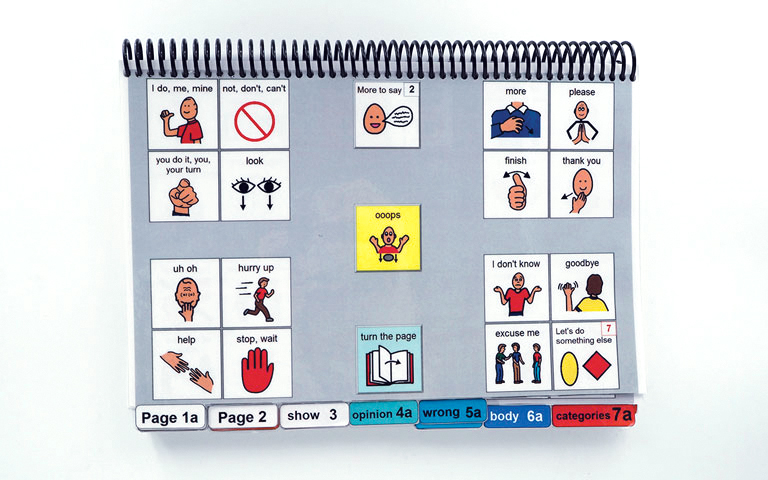
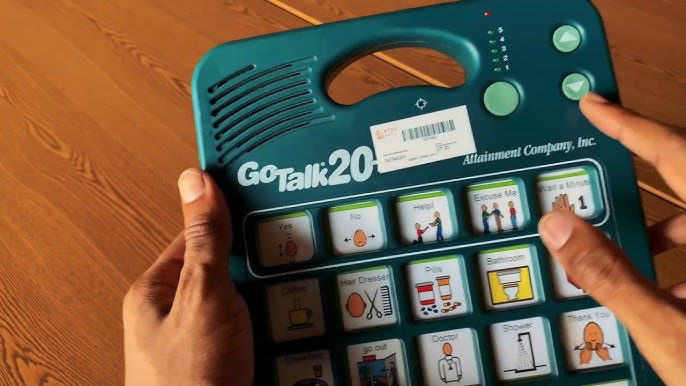
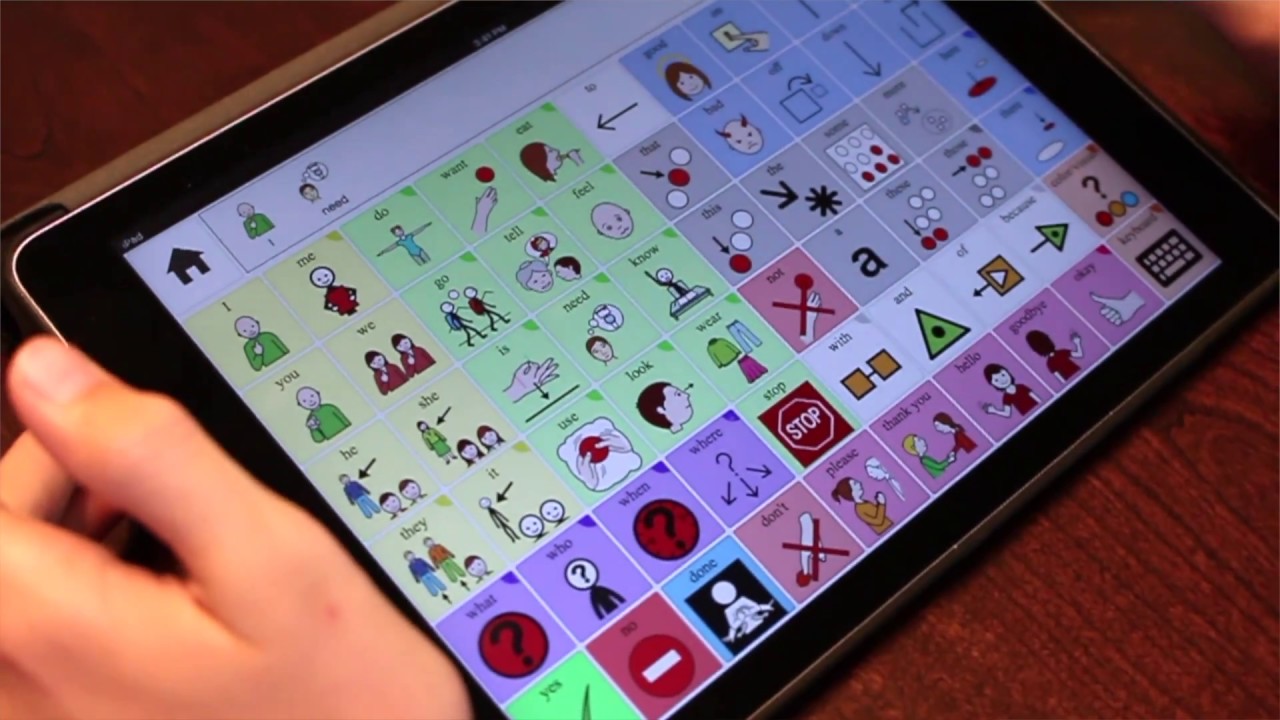
 Important AAC Terms Handout
Important AAC Terms Handout Choice-Making Support Handout
Choice-Making Support Handout Becoming a Great Communication Partner Handout
Becoming a Great Communication Partner Handout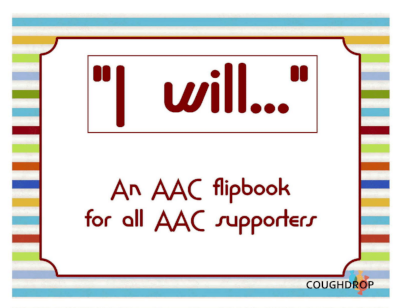 AAC "I Will" Commitment Printoffs
AAC "I Will" Commitment Printoffs AAC - It's OK to F.A.I.L. Handout
AAC - It's OK to F.A.I.L. Handout Modeling Core Language for Beginners
Modeling Core Language for Beginners 5 Keys to Great AAC Modeling
5 Keys to Great AAC Modeling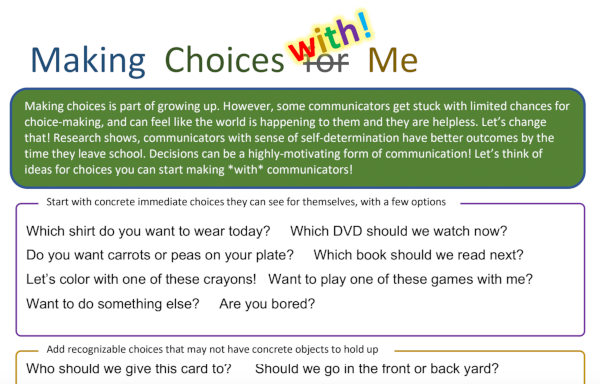 Making Choices With Me Handout
Making Choices With Me Handout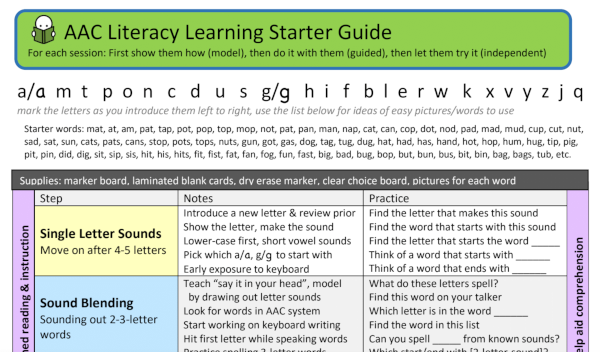 AAC and Literacy Guide
AAC and Literacy Guide Shared Reading Comprehension Handout
Shared Reading Comprehension Handout AAC and Literacy
AAC and Literacy
 AAC Family Fun
AAC Family Fun
 NWACS Family AAC Group
NWACS Family AAC Group